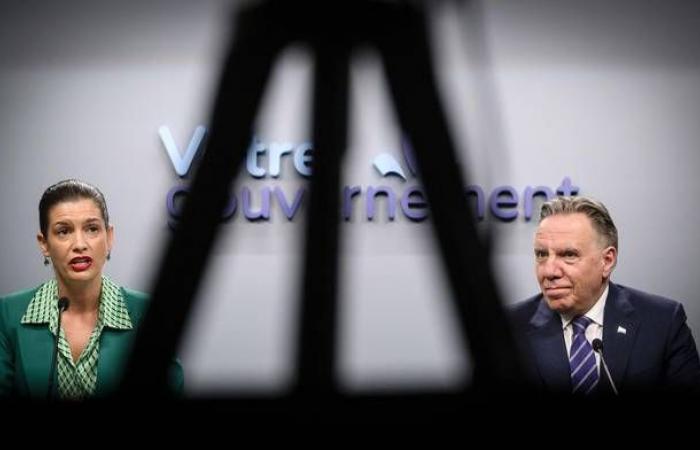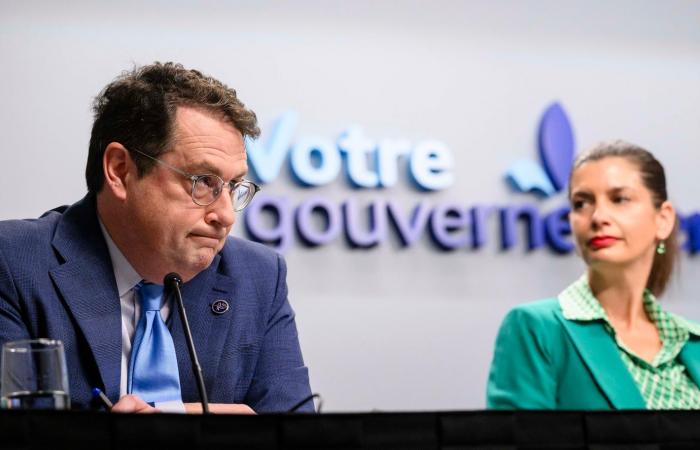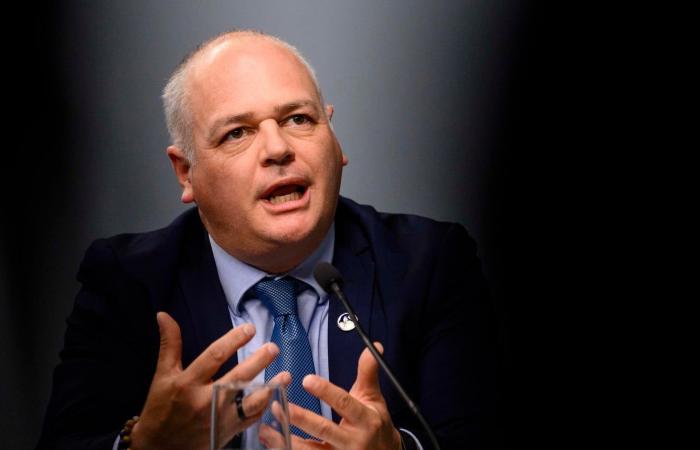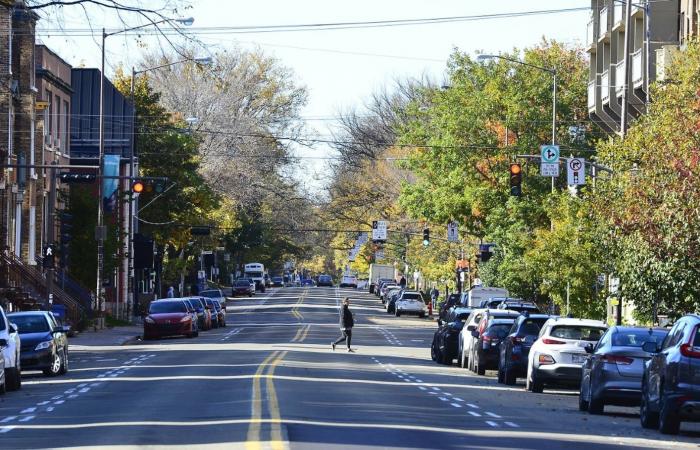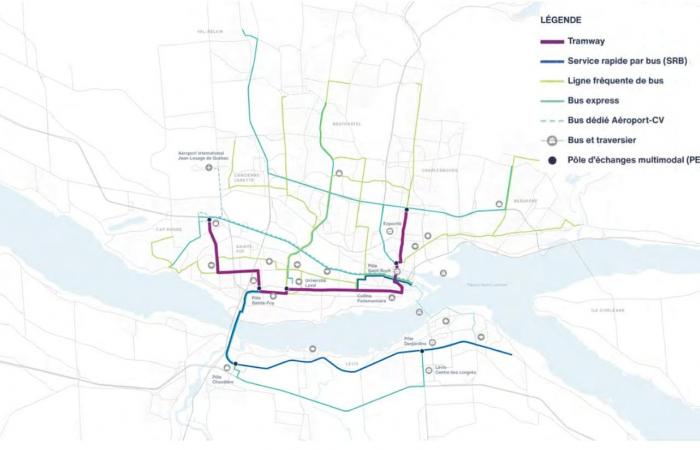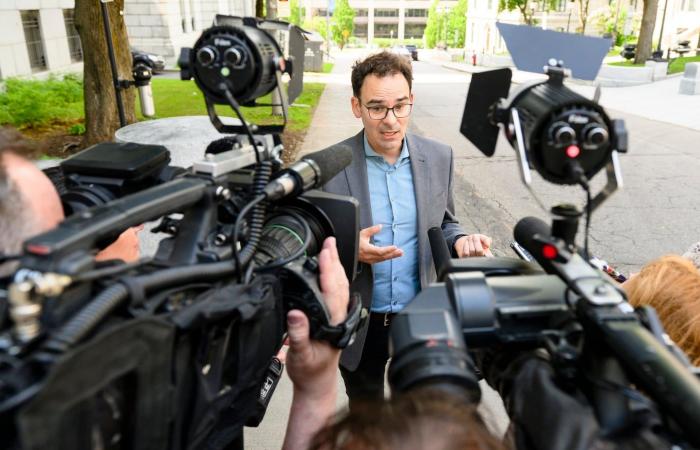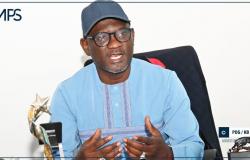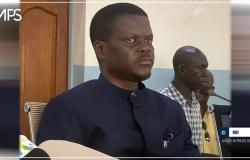With three ministers from Quebec and Lévis at his side, Thursday, Prime Minister Legault confirmed the information that appeared in the media in recent hours.
Quebec officially gives its approval to the construction of a tram line in the capital and a third link connecting the two banks of the Saint-Laurent.
The Legault government therefore partially accepts the recommendations made the day before by the Caisse de dépôt et placement du Québec (CDPQ), which recommended the construction of a 19 km “spine” linking the Le Gendre pole to Charlesbourg for transport collective in Quebec.
The CAQ, however, ignores the conclusions of the Caisse’s independent experts in the third link file.
Even if the CDPQ report concludes that a new highway between Quebec and Lévis is not justified taking into account the traffic and the low mobility gains that one more axis would bring, Quebec is moving forward with its promise of a third link.
“As Prime Minister, it’s the kind of issue that no matter the decision, there are people who will complain,” remarked Prime Minister Legault, justifying his decision.
“We have been opposing the two projects for a long time […] We can do both.”
— François Legault, Premier of Quebec
The Prime Minister refused to commit to timetables for the first shovels in the ground, repeating that he wanted to move forward, but “do things well”.
François Legault says he is very aware that he must regain his credibility in this matter. (Jocelyn Riendeau/Le Soleil)
The experienced politician notes that in the eyes of Quebecers, he and his government look like real weather vanes on this issue. He responds with a “just watch me» of his own.
“I am aware of this loss of confidence. We have two and a half years left to demonstrate that we are serious about our commitment. Watch us go.”
— François Legault, Premier of Quebec
A third link for security
We’re talking about a bridge. To pass cars and trucks. No public transportation, Mr. Legault made clear.
Of the six possible corridors studied by CDPQ Infra to build a third link in the form of a tunnel or bridge, the corridor located to the east between Pointe de Lévis and Beauport is now favored by the Legault government.
More precisely, the corridor would connect the Monseigneur-Bourget area, on the South Shore, to the intersection of highways 40 and 440, on the North Shore.
CDPQ Infra indicates that the time saving would prove to be “low” and that “several significant physical constraints” are listed. The report names environmental issues, noise and the incompatibility with the commitment to transform the Dufferin-Montmorency highway into an urban boulevard.
Mr. Legault and his Deputy Prime Minister and Minister of Transport and Sustainable Mobility, Geneviève Guilbault, use the argument of “economic security” and the hypothetical closure of the Pierre-Laporte bridge to justify the need for a new bridge to pass trucks.
Canadian minister and federal MP for Quebec Jean-Yves Duclos, whose government recently owned the Quebec Bridge, said Thursday morning that lowering the deck of the more than century-old cantilever bridge could make it possible to accommodate trucks.
The revelation of Duclos
Mr. Legault and Ms. Guilbault seemed surprised by this possibility. “We are going to look at this new discovery by Mr. Duclos. But where did Mr. Duclos get that?” launched the Prime Minister, as his only response.
For its government, the fact that the Laporte Bridge is 54 years old, that 10,500 freight trucks pass through it every day and that the closest alternative is 140 km away, in Trois-Rivières, justifies the erection of new infrastructure.
“Can we live with economic risk?” asked Mr. Legault. His answer is no.
Member of Parliament for Lévis and minister responsible for Chaudière-Appalaches, Bernard Drainville said he was “happy and relieved”. (Jocelyn Riendeau/Le Soleil)
He mandates Minister Guilbault and the general secretary of the government, Dominique Savoie, in a way the deputy minister of the Prime Minister, to coordinate the actions of all the ministries involved in the possible achievement.
Both Mr. Legault and Ms. Guilbault recognize, as they did 14 months ago by officially abandoning this same project, that the traffic does not justify the construction of a third link.
Minister Guilbault speaks of “making the responsible decision, for once, finally, to plan”
No timetable or amount has been put forward. Ms. Guilbault still spoke of being “realistic. These are not projects that can be delivered overnight.”
The minister responsible for the Chaudière-Appalaches region, Bernard Drainville, said he was “happy and relieved”. “We have always believed in it, we continue to believe in it more than ever,” he indicated, on behalf of the CAQ elected officials of the Chaudière-Appalaches caucus.
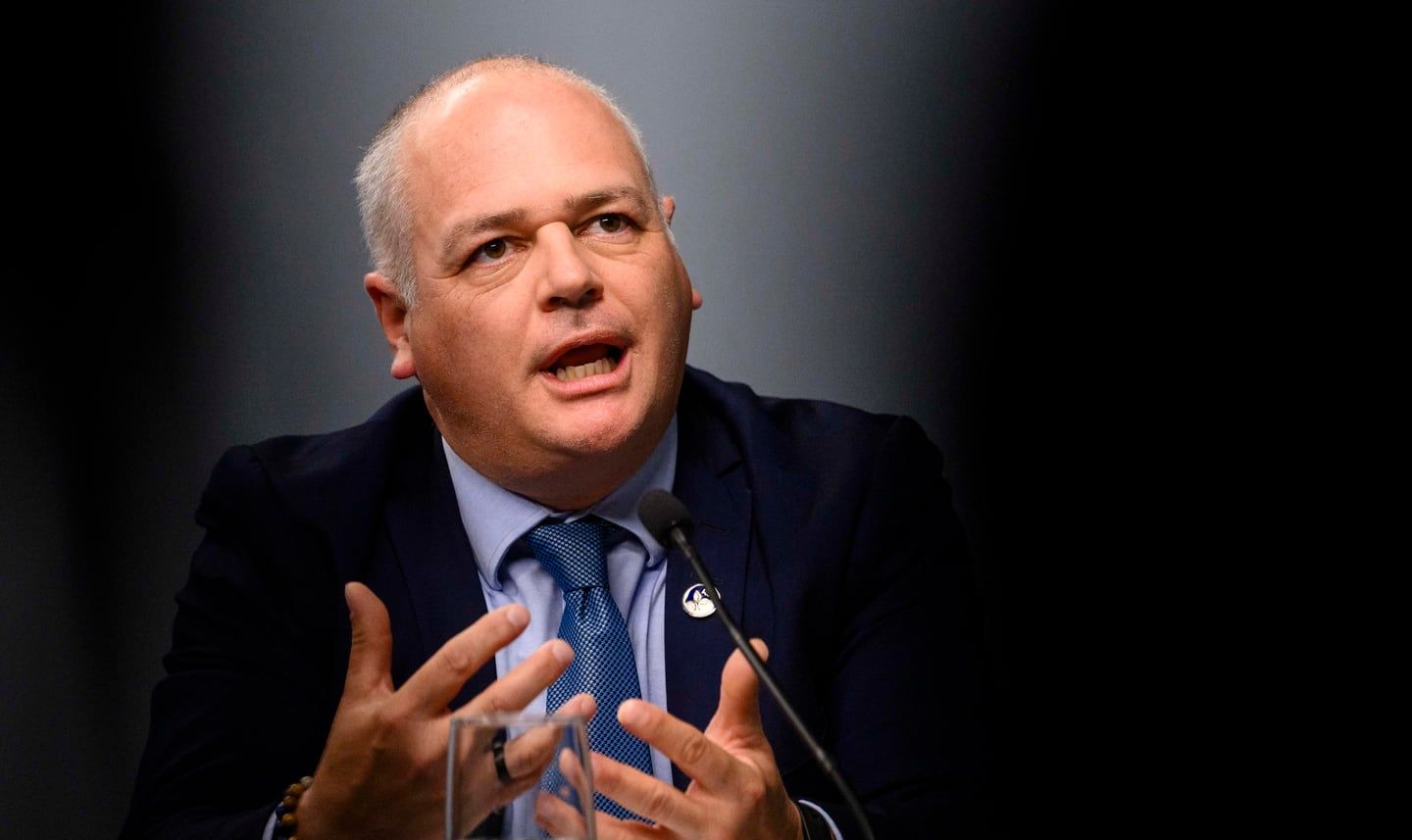
Member of Parliament for Charlesbourg and Minister of the National Capital and Infrastructure, Jonathan Julien assured that a future bridge to the east will not compromise the fourth phase of the Samuel-De Champlain promenade on the Beauport flats side. (Jocelyn Riendeau/Le Soleil)
Mr. Drainville, who is also Minister of Education, cried in front of the cameras when the third link was abandoned in April 2023.
His colleague responsible for the Capitale-Nationale region, Jonatan Julien, who is also minister responsible for Infrastructure, assured that a project for a bridge to the east does not jeopardize the transformation of the Dufferin- Montmorency boulevard nor the construction of the fourth phase of the Samuel-De Champlain promenade.
Yes to the tram, we’ll see later
Prime Minister Legault is committed to building the tram line linking the Le Gendre pole to Charlesbourg, the “backbone” proposed by the Caisse.
CAQ ministers say they are satisfied with the suggested modifications, which promise a longer tramway, but with less imposing trains.
We estimate that we will be able to save a good amount of money on the size of the stations and the tunnel linking Parliament Hill to the Saint-Roch district. We also claim to be able to avoid several inconveniences on the route, such as the cutting of certain century-old trees.

Quebec is reassured by a tramway proposal which promises to cut down fewer trees along its route, particularly on René-Lévesque Boulevard. (Yan Doublet/Archives Le Soleil)
For the government, this is proof that the six-month “pause” imposed after the abandonment of Mayor Marchand’s project was beneficial.
“These six months have been very very very profitable,” insisted the Minister of Transport, Geneviève Guilbault. We have a project that costs less for more kilometers […] compared to the project we had,” she underlined.
The approximately 19 kilometers of tramway for which the Legault government is committed should cost around 5.3 billion, according to analyzes by the Caisse.
“For the tram, we buy a trip there, and we commit to making that trip.”
— François Legault, Premier of Quebec
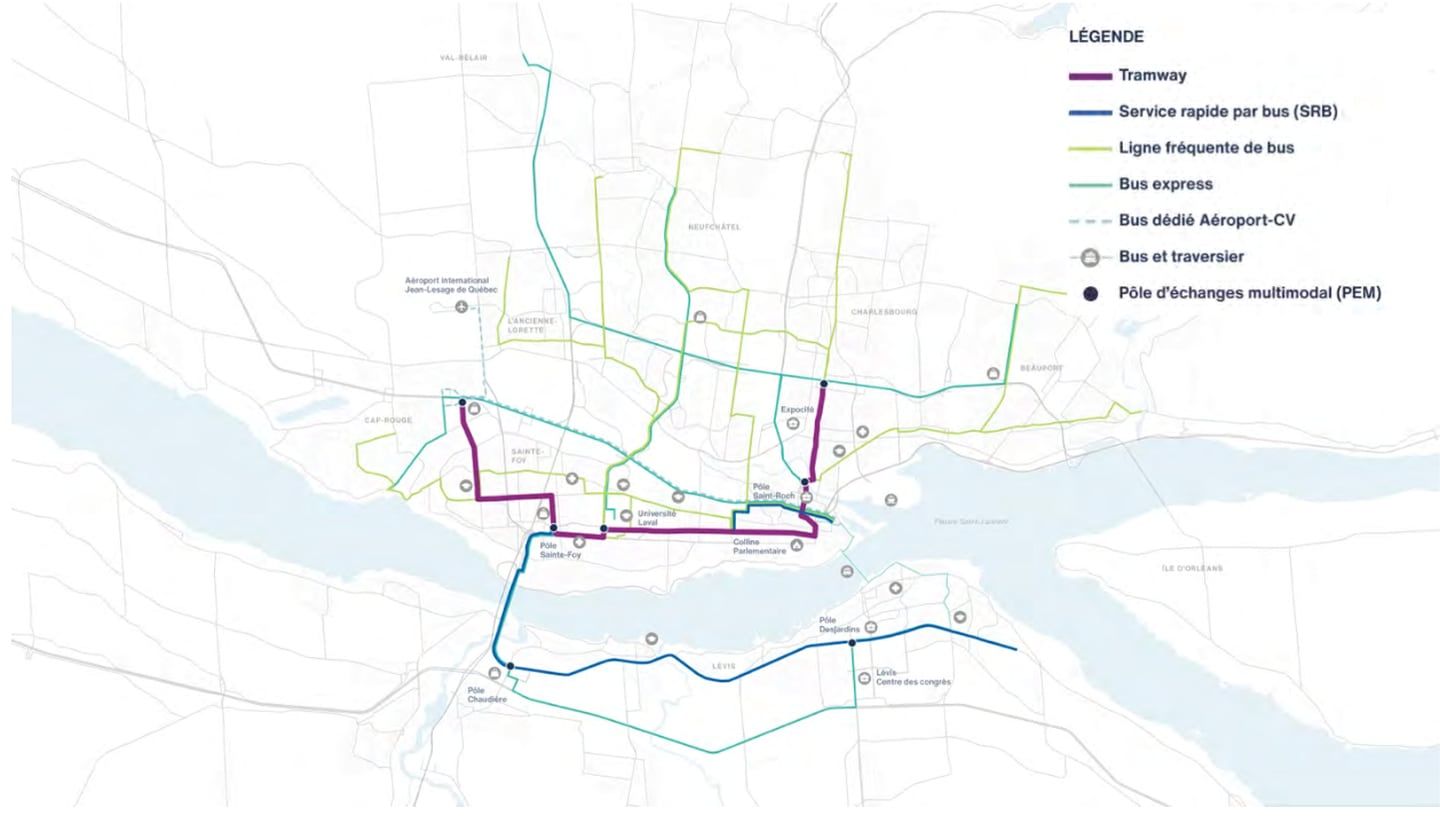
Phase 1 of the Integrated Express Transport Circuit (CITÉ) plan, proposed by the CDPQ after six months of analysis of mobility needs in Quebec. (CDPQ INFRA)
The Legault government has not committed to supporting the other phases of development identified by the CDPQ, namely towards D’Estimauville (phase 2) and towards Lévis and Lebourgneuf (phase 3).
“We are open to other phases, but today, we are committing to the spine”
— Francois Legault, Premier of Quebec
Quebec also showed itself to be rather hesitant to follow the recommendations of the CDPQ regarding the establishment of a Rapid Bus Service (SRB) connecting Charest boulevards, in Saint-Roch, and Guillaume-Couture, in Lévis.
Instead, we promise to meet with Mayors Marchand and Lehouillier to identify the public transportation project they prefer for these axes. Quebec wants to ensure that it does not “impose” the conclusions of the CDPQ on municipal elected officials.
Minister Bernard Drainville, elected in Lévis and responsible for Chaudière-Appalaches, has already suggested that residents of the South Shore would be entitled to reserved lanes rather than an SRB.
What they said
“We’ve been waiting for this moment for a long time! I am therefore delighted that the government immediately confirms the implementation of the first phase of the CITÉ Plan, in which a tram, an SRB and an improved bus network are planned to better serve all sectors of the city.”
— Bruno Marchand, mayor of Quebec
“The CAQ is in such a degree of improvisation that it is dangerous. Dangerous for our public finances, dangerous for our transport. And that raises other questions about CAQ governance.”
— Paul St-Pierre Plamondon, leader of the Parti Québécois
“On the third link, the government is covering itself with ridicule. After the bridges per million [d’habitants], did we really need a new economic security argument? Since 1992, trucking has been prohibited on the Quebec Bridge and no one at the CAQ or in this government has ever raised this argument. This falls into the category of far-fetched arguments.”
— Étienne Grandmont, MP for Taschereau and spokesperson for Québec solidaire in transport and infrastructure
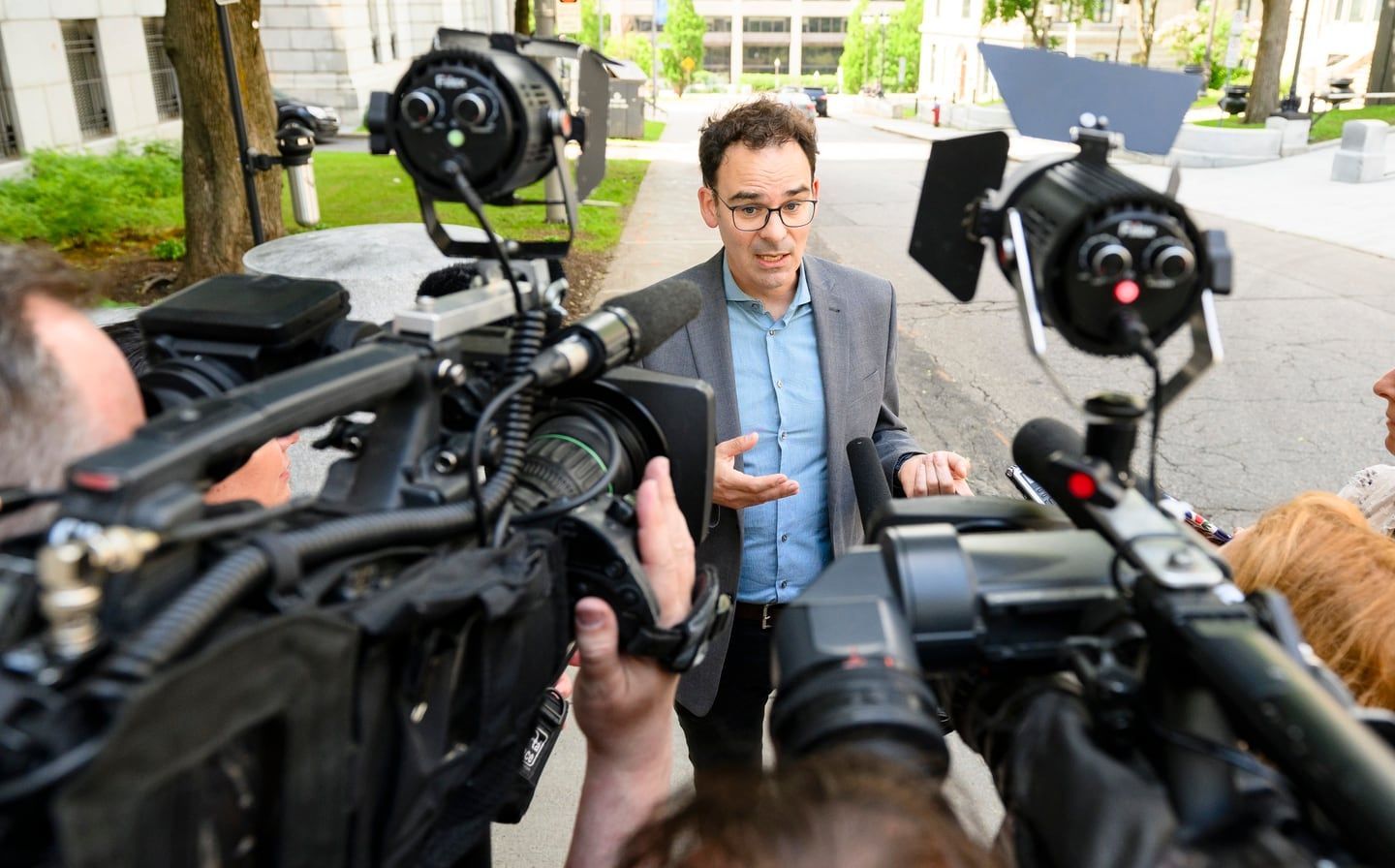
Étienne Grandmont, from Québec solidaire, reacted a few minutes after the press conference by Prime Minister Legault and his three ministers. (Jocelyn Riendeau/Le Soleil)
“François Legault promises, once again, a third link to Quebec. It’s only him who believes himself. In this matter, no one anymore gives value to the Prime Minister’s words. […] The real “economic risk” is not the Pierre-Laporte bridge, it is… the CAQ!”
— Marc Tanguay, leader of the Quebec Liberal Party
Finally, but let’s hope that this time it’s the right one! […] It’s a question of economic security, we’ve been talking about it for too long, it’s time to take action.”
— Marie-Josée Morency, President and CEO of the Chamber of Commerce and Industry of Greater Lévis
“Moving forward with the tram project is a historic decision for our city and our region”
— Yvon Charest, spokesperson for the I have my pass campaign
“Now that the lights are green for the completion of the tramway project in Quebec, we emphasize the need to call on certified construction cost specialists, today, to ensure compliance with budgets and deadlines.”
— Patrick Vallerand, president of the Association of construction estimators and economists of Quebec
“By giving the green light to the Quebec City tramway, Prime Minister François Legault kept his promise and created a historic legacy for the region. This is a great day for our national capital. It’s a great day for public transportation in Quebec!”
— Christian Savard, general director of the organization Vivre en ville

